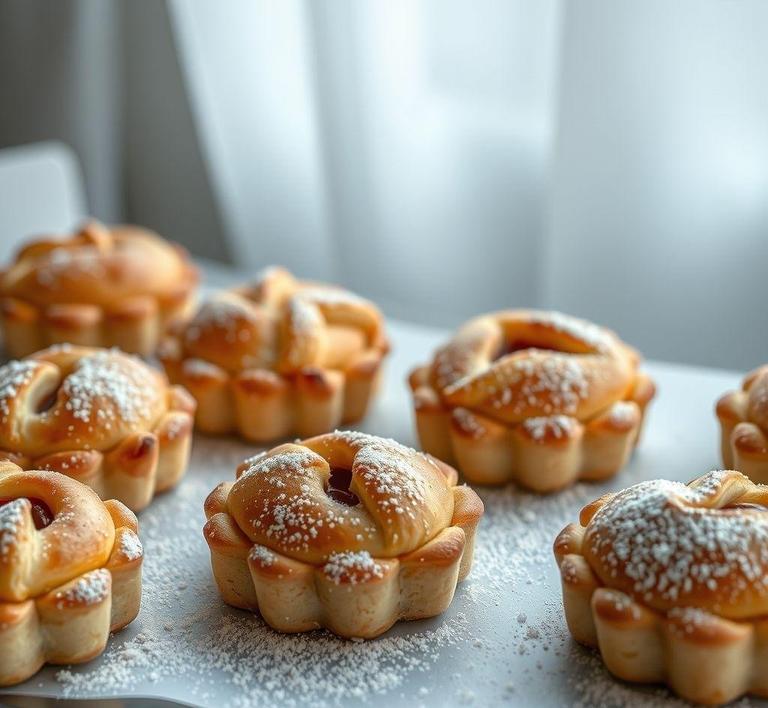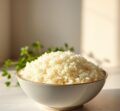If you’ve ever made a batch of shortcrust pastry and ended up with leftovers, you might be wondering if you can refreeze it to use later. Good news! Refreezing shortcrust pastries is totally possible, but there are a few key things you need to know to ensure it retains its flaky, tender texture when baked again. In this guide, we’ll walk you through the best practices for freezing and refreezing your shortcrust pastries-whether it’s dough or fully baked-so you can enjoy perfect pastries even after storage. Let’s dive into how to keep your pastry crisp and delicious, without losing that melt-in-your-mouth charm!
Can You Refreeze Shortcrust Pastries?

Shortcrust pastry, known for its crumbly texture and delicate flavor, is a favorite in both savory and sweet dishes, from pies to tarts. It’s no surprise that many of us might find ourselves with leftovers, wondering whether it’s safe or wise to refreeze shortcrust pastry.
The answer is yes, but with caveats. Refreezing shortcrust pastry is technically possible, but it’s not always the best option when it comes to preserving its texture and taste. The reason for this lies in the delicate balance of ingredients-flour, fat, and water-used to create the perfect shortcrust dough. Freezing the pastry once is a standard way of preserving it, but each subsequent freeze and thaw cycle can break down the dough’s structure.
Freezing works by slowing down the water molecules in the dough, keeping them from causing oxidation or spoilage. However, when you freeze and thaw dough, some moisture might leak out, altering the dough’s consistency. Refreezing exacerbates this issue. When you freeze dough a second time, the fat in the pastry may separate or lose its original integrity, leading to a soggy texture once baked.
So, while it’s possible to refreeze shortcrust pastry, it’s important to note that the quality of the final product may not be as high as when it was first frozen. The more times you freeze and thaw the dough, the more the fat and flour can break down, affecting both the texture and the flavor.
How To Refreeze Shortcrust Pastries?
If you find yourself in a situation where refreezing shortcrust pastry is necessary, there are ways to minimize the damage and preserve its quality as best as possible. Here’s a step-by-step guide on how to properly refreeze your shortcrust pastry:
-
Cool the Pastry Thoroughly
Before freezing your shortcrust pastry again, make sure it has cooled down completely if it was previously baked or thawed. Any residual heat can cause moisture to form inside the packaging, leading to ice crystals, which will degrade the dough further upon refreezing.
-
Divide and Portion
If you’ve thawed a larger batch of pastry and only need part of it, divide it into manageable portions before refreezing. This way, you avoid having to thaw and refreeze the entire batch, which helps maintain the quality of the unused portions.
-
Wrap Properly
To prevent freezer burn and moisture loss, wrap the pastry tightly in plastic wrap or wax paper, followed by a layer of aluminum foil or a freezer-safe plastic bag. The goal is to create a barrier that prevents air from touching the dough, which would cause it to dry out or form ice crystals.
-
Label and Date
Always label the pastry with the date it was frozen. This helps ensure you don’t keep it in the freezer too long, as refrozen pastry should ideally be used within a few weeks of its second freezing. Over time, even well-wrapped pastry can suffer from loss of quality, so it’s best to use it within a reasonable timeframe.
-
Thawing for Use
When you’re ready to use the refrozen pastry, thaw it in the fridge overnight to maintain the integrity of the fat content. Avoid thawing it at room temperature, as this can lead to a mushy texture. If you’re using it for baking, you may need to adjust the baking time or temperature slightly, as the texture may have softened.
Quality Impact
Refreezing shortcrust pastry does impact its quality. Here’s a closer look at how the freezing and thawing process affects the texture, flavor, and overall integrity of the dough:
Texture
Shortcrust pastry is prized for its flaky, crisp texture. However, the more times it is frozen and thawed, the more likely it is to lose its signature crispness. The moisture in the dough can form ice crystals during freezing, which disrupts the dough’s structure when it thaws. The result can be a more compact, less airy texture, leading to a pastry that is either too crumbly or too dense after baking. In some cases, refrozen pastry can become soggy or soft, particularly if the dough was previously baked before being frozen.
Flavor
While the flavor of shortcrust pastry is generally not as dramatically impacted by freezing as its texture, repeated freezing can cause slight flavor degradation. This is particularly true if the pastry has been thawed and refrozen multiple times. The fats and oils in the pastry can begin to break down with each freeze-thaw cycle, resulting in a slightly stale or greasy taste. Furthermore, if the pastry was exposed to air in the freezer, freezer burn can develop, which will negatively affect the flavor and make it taste off.
Overall Integrity
The overall integrity of the pastry also suffers from refreezing. While the dough might still hold together well enough for baking, it may lose its delicate balance of ingredients that creates the perfect texture. The more fragile nature of the dough is weakened by ice crystals and the breakdown of fats. For pies, tarts, and other pastry-based dishes, this can impact the final product-especially in terms of appearance, as refrozen pastry might not hold its shape as well.
While you can refreeze shortcrust pastries, it’s not ideal if you want to preserve the integrity of the pastry. Refreezing will likely impact the texture, making it less flaky and potentially soggier. Flavor can also suffer, especially after multiple freeze-thaw cycles. The best practice is to only freeze shortcrust pastry once and to use proper packaging and storage techniques to maintain its quality. If you must refreeze it, be sure to follow the proper steps to minimize damage, but be prepared for a slight compromise in both taste and texture.
In the end, shortcrust pastry is best enjoyed fresh or after a single round of freezing. If you have leftover dough, consider using it up within a reasonable timeframe, and try to avoid unnecessary freezing to keep that perfect balance of crumbly, flaky goodness.
Is It Safe To Refreeze Shortcrust Pastries?
Refreezing shortcrust pastries, like many other baked goods, is a subject that requires a bit of careful consideration. In principle, it’s possible to refreeze shortcrust pastries, but it depends heavily on how they were initially frozen and how they have been handled. Shortcrust pastry is a delicate dough made primarily from flour, butter, and water, and its texture can be significantly impacted by the freezing and refreezing process.
When you freeze shortcrust pastry, whether raw or baked, you’re essentially halting the progression of enzymatic reactions and preventing spoilage. However, the issue arises when you refreeze it, as the quality of the pastry may suffer due to moisture loss, which can cause it to become dry and crumbly. Refreezing already thawed pastry can also increase the risk of bacterial growth if not done safely. If you decide to refreeze shortcrust pastry, it’s essential that it has been handled properly and frozen at the right time to ensure it remains safe to eat.
Here are some crucial considerations:
- Initial Freezing Conditions: If the pastry was frozen at the peak of freshness and hasn’t been left at room temperature for more than a couple of hours, it is more likely to hold up well after being refrozen.
- Type of Pastry: Baked shortcrust pastry might not fare as well in terms of texture compared to raw pastry. Once baked, the delicate structure of the dough has already changed, and refreezing can cause it to become soggy or overly hard after reheating.
- Time Frame: The longer you leave shortcrust pastry in the freezer before refreezing, the more the quality and texture will degrade. Ideally, you should refreeze it within a few weeks of the initial freezing to maintain acceptable quality.
Signs That Shortcrust Pastries Should Not Be Refrozen
Before deciding to refreeze shortcrust pastries, it’s vital to examine them carefully for signs of deterioration. Here are a few red flags that indicate it’s better not to refreeze them:
- Excessive Moisture: If the pastry appears soggy or wet after thawing, it is likely that the moisture has already begun to break down the structure of the dough. Refreezing it could make it soggier, and when reheated, it will lose its crispy texture.
- Visible Ice Crystals: Ice crystals that form on the surface of the pastry when it’s thawed may indicate that it has been frozen for too long, or the temperature fluctuated during the freezing process. If the pastry was not initially frozen properly, refreezing can make it even less palatable.
- Changes in Color or Odor: A yellowish tinge, off-smell, or any signs of mold or discoloration are definite signs that the pastry has gone bad. These changes typically occur when the dough has been exposed to air for too long or was not stored properly in the first place.
- Soft or Crumbly Texture: If, upon thawing, the pastry is excessively soft, crumbly, or feels fragile to the touch, the structure has been compromised. Refreezing this pastry would likely result in a texture that’s less than desirable, both in terms of mouthfeel and appearance.
- Prolonged Thawing Time: If the pastry has been sitting out at room temperature for more than a couple of hours before being refrozen, it’s unsafe to do so. The risk of bacterial growth increases substantially after this point, and refreezing it won’t help.
Common Refreezing Mistakes
Refreezing shortcrust pastries can be tricky, and people often make some common mistakes that affect both the safety and quality of the food. Here are a few pitfalls to avoid:
- Refreezing After Multiple Thawing Cycles: The biggest mistake is thawing and refreezing shortcrust pastry more than once. Each cycle of thawing and refreezing causes more moisture loss, which in turn impacts the texture and could cause freezer burn. Refreezing once, provided that it’s done under the right conditions, can be okay, but multiple cycles are asking for disaster.
- Not Wrapping Pastry Properly: If the shortcrust pastry is not properly wrapped or sealed when frozen, it can absorb odors from other foods in the freezer. It can also develop freezer burn, which will drastically affect the taste and texture. Use airtight packaging or plastic wrap to ensure it’s properly sealed, and if you’re freezing individual pieces, be sure to layer them with parchment paper to prevent sticking.
- Freezing Pastry with Fillings: If your shortcrust pastry is already filled (for example, with fruit, custard, or meat), the filling may not freeze well. Some fillings, particularly those with high water content, may release liquid when thawed, making the pastry soggy. Always check whether the filling is suitable for freezing and consider freezing the pastry and filling separately if necessary.
- Incorrect Thawing Method: If you’re in a rush and decide to thaw your shortcrust pastry too quickly-by placing it in a warm oven, for instance-you could damage its structure. The best way to thaw frozen shortcrust pastry is in the refrigerator overnight. Rapid temperature changes can affect the pastry’s texture, causing it to become limp or overly tough when baked.
- Refreezing After Prolonged Thawing: Leaving the pastry at room temperature for several hours before deciding to refreeze it is a mistake. Bacteria grow quickly at room temperature, and refreezing the pastry after it’s been thawed for too long can pose a health risk.
Tips And Tricks
Here are some helpful tips to make the most of freezing and refreezing shortcrust pastry:
- Freeze Immediately After Making: For the best results, freeze the pastry immediately after preparing it, either before or after baking. If you’re freezing raw dough, shape it into a disc, wrap it tightly in plastic wrap, and then place it in a freezer bag or airtight container. This minimizes exposure to air and helps preserve the quality.
- Freeze in Small Portions: If you’re unsure about refreezing large amounts of pastry, consider freezing individual portions of dough. This allows you to take out just what you need and minimizes the risk of refreezing unused portions multiple times.
- Double Wrap for Extra Protection: To avoid freezer burn and preserve flavor, wrap your shortcrust pastry in plastic wrap first, followed by aluminum foil or place it in a zip-top bag with as much air removed as possible.
- Thaw Slowly in the Fridge: Always thaw shortcrust pastry in the fridge overnight. While it might be tempting to speed up the process by leaving it out on the counter, slow thawing in the fridge helps maintain its integrity and reduces the risk of bacterial growth.
- Check Fillings Before Freezing: If you plan to freeze a filled pastry, ensure that the filling is compatible with freezing. Some creamy or custard-based fillings don’t hold up well when frozen and may become watery or curdled after thawing.
Conclusion
While refreezing shortcrust pastry is possible, it requires careful handling to preserve both its safety and quality. The general rule of thumb is that refreezing pastry should only be done once, and it’s important to avoid certain mistakes, like thawing at room temperature for too long or improperly sealing the pastry during its first freeze. By paying attention to the signs that indicate when refreezing is a bad idea and following the right steps for freezing and thawing, you can extend the life of your shortcrust pastry and enjoy it later without compromising its texture or taste. If in doubt, it’s always better to err on the side of caution and avoid refreezing altogether, especially if you notice signs of deterioration.


